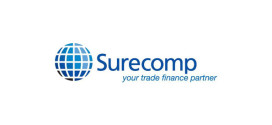
Maki Vekinis, Cash Management Matters – CMM Managing Partner, looks at the difference between vendor evaluation and selection of a cash management programme
Following up from our previous article on vendor evaluation and selection of a cash management platform, we will now describe the differences between the two activities and why they should be kept apart and separate.
In a typical environment, when a financial institution has evaluated and selected a vendor deemed the most appropriate to supply and implement a cash management platform, the process is well defined and straightforward:
- Definition of the business, user, operations and technology requirement
- Construction
- Delivery
- Acceptance
- Implementation
But let us examine if this set of activities is sufficient to implement the platform successfully while simultaneously introducing the necessary business propositions and tools to manage a business successfully.
Inspecting these activities one-by-one, it is sometimes easy to assume that the definition of requirements should provide guidance for both the construction and implementation and, by necessity, the acceptance framework. Basically, the thinking goes that as long as there is sufficient reconciliation between the requirements and the implemented platform (proven through the execution of a rigorous test framework) it is accepted and considered delivered.
This is exactly where many efforts have faced the biggest challenge and budgetary estimates have been thrown out of the window. Right from the word “go”, the platform should be considered, but only as one of the pieces of the puzzle. Often, because the platform implementation is well-defined and comes with adequate and experienced project management, and with all the associated the risks contained, there are still numerous activities required to be dimensioned and completed.
For example, preparation to undertake the support of customers switching to on-line banking is an important task that consumes effort across the organisation. By the same token, preparation to market the services enabled through the platform comprises of platform training as well as proposal preparation with clear pricing guidelines and service model.
Additionally, the investment decision to implement the platform must be qualified within a short-tomedium term timeframe (typically between three and five years) by tracking the incremental revenues through increasing existing customer wallet or market penetration.
The performance MIS, which is sometimes defined as part of the business requirements, must now be integrated into the bank’s MIS to present a complete picture of a relationship. This is no easy task in most banks but it must be implemented. As the saying goes, “if you cannot see the numbers, you cannot manage”.
The above is but a small list of the series of subactivities that are required to be undertaken in implementing a cash management platform. And all are very important in their own right as each contributes to the success of the implementation.
For example, what is the use of implementing an expensive and fully comprehensive platform when the customer support is not able to provide the service? Customers previously calling for account transaction investigation, balance inquiry or transaction initiation are now sending secure emails to follow-up on individual items they have identified on their on-line statement or they can immediately spot a direct debit that was not collected and they want to know if it was rejected due to lack of funds or erroneous data.
We can keep on going down the list of the subtasks but the result will be the same; we will soon realise that implementing a cash management platform exercises the full breadth of a bank’s organisation, affecting operations and business in equal measure.
And this is where we are making the case for certification as opposed to merely performing acceptance testing.
We define the term “certification” as the set of activities that will confirm that the implemented and accepted platform will become an integral part of the bank’s operational capabilities and the projected incremental business results are wholly owned by the sponsoring business units.
It is the certification that will ensure the stakeholders are recognised and their continuous contribution in supporting the business is stated and agreed.
The above paragraph presents the significance of the certification and by extension its inherent complexity, which further leads us to question who is able perform the certification as defined above, and under what conditions.
A way to answer this question is to first examine what comprises the certification environment and what are the necessary conditions to undertake it. A simple but not exhaustive certification check-list of pre-requisites is as follows:
- accepted platform implemented in the bank’s environment
- operational readiness to undertake the acceptance processing of the transactions
- inward and outward facing support model
- business development process
- customer enrolment and maintenance process
- business performance monitoring
- market management
- product management
- support interfaces with internal partners
When the above are in place and are carefully documented, a series of initially simple but ultimately complex business cases are created to exercise the processes and ensure all activities are performed in unison as expected. These business cases, by definition, are exactly the opposite of the test cases often found in the acceptance testing plans. They are designed to emulate the complete customer experience or the business management experience or the partner experience.
They can run for many days and are often used repeatedly in the future – post production – to identify issues and produce corrective actions.
Certification is an important activity and it is the necessary confirmation that a bank is ready to offer and support the business and the propositions made possible through the cash management platform. And by extension, the investment is the certification exercise – as described – will safeguard the credibility of the initiative and demonstrate the commitment to offering and managing a customerfocused set of business propositions.
 Cash And Trade Magazine For Cash and Trade professionals in the Middle East
Cash And Trade Magazine For Cash and Trade professionals in the Middle East




